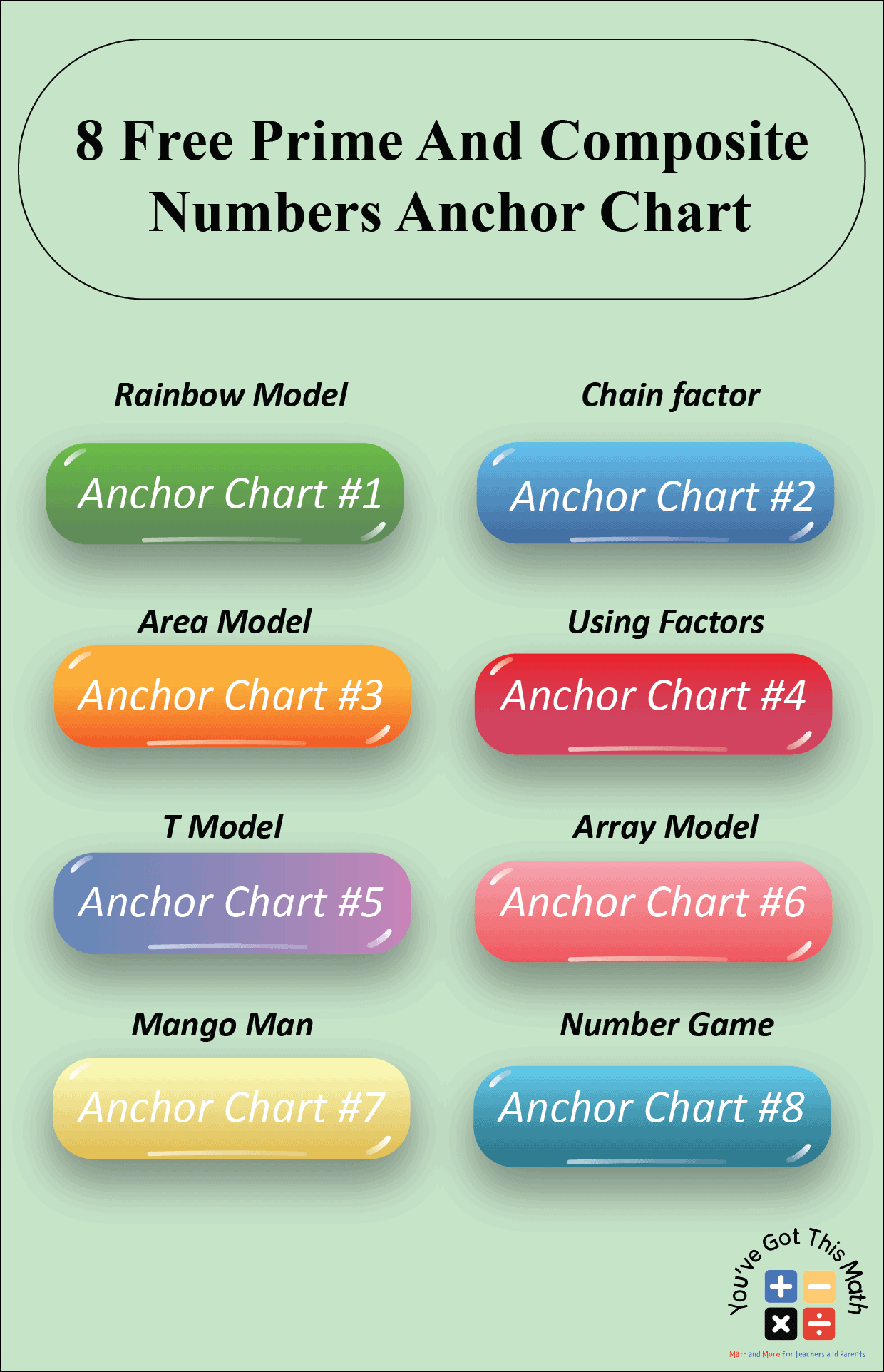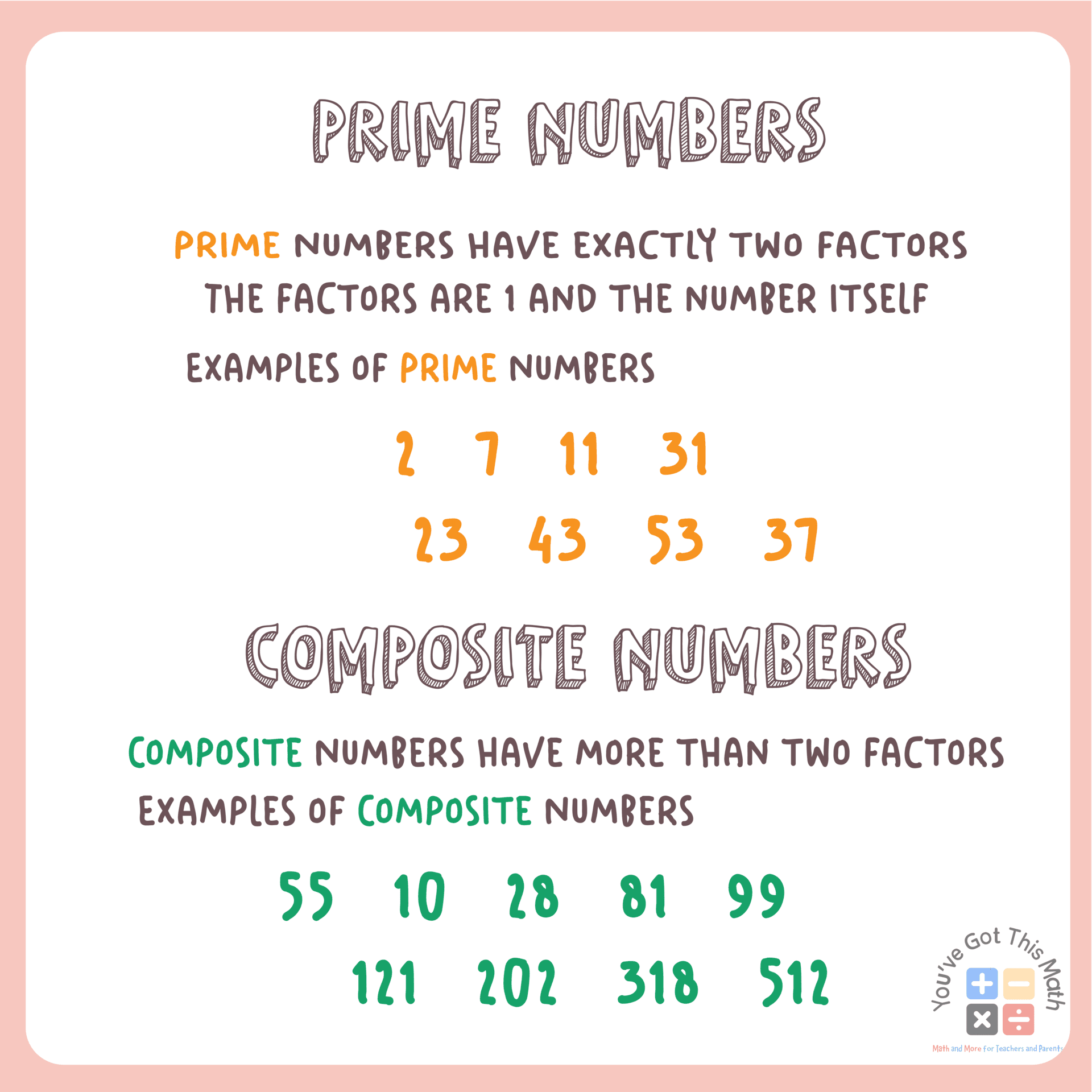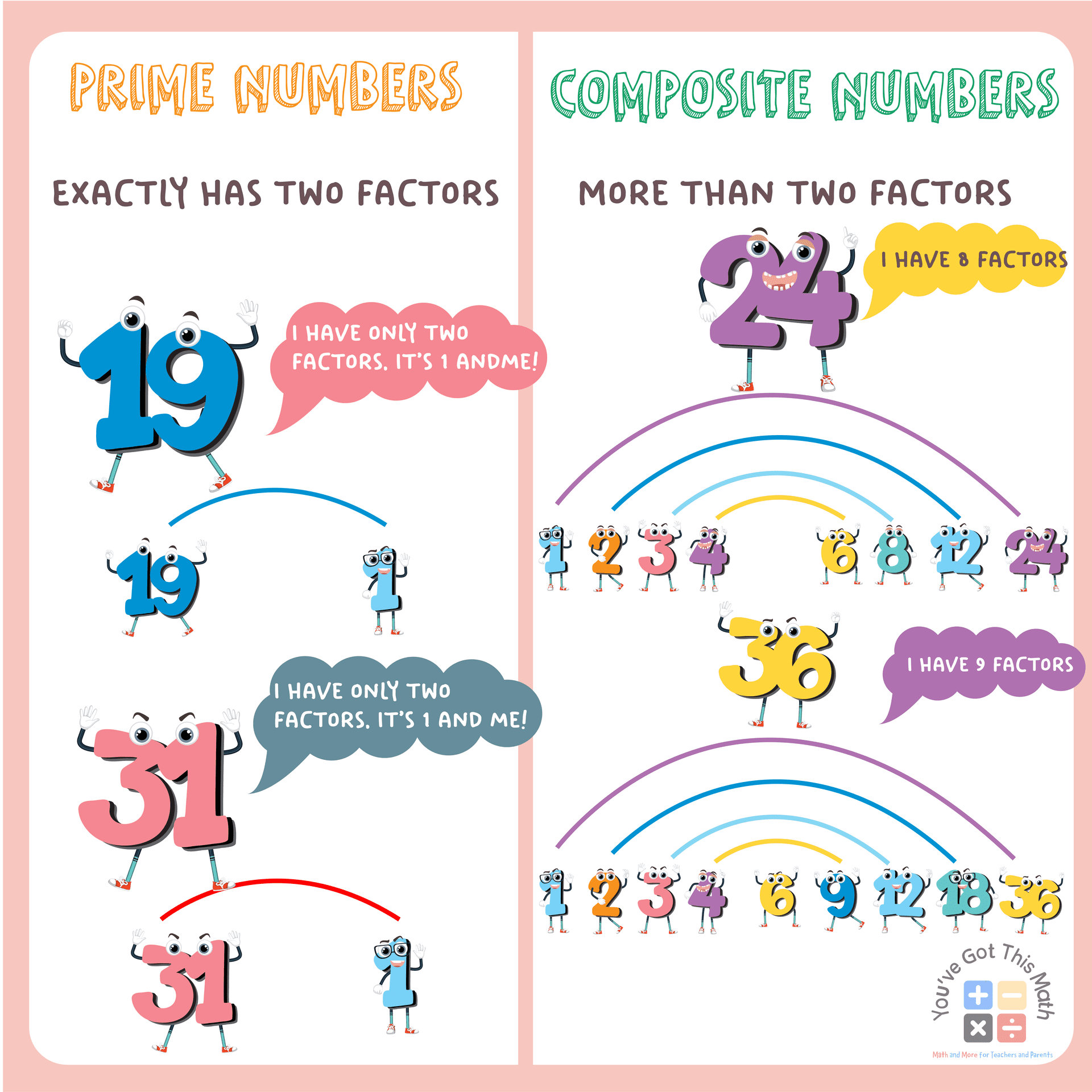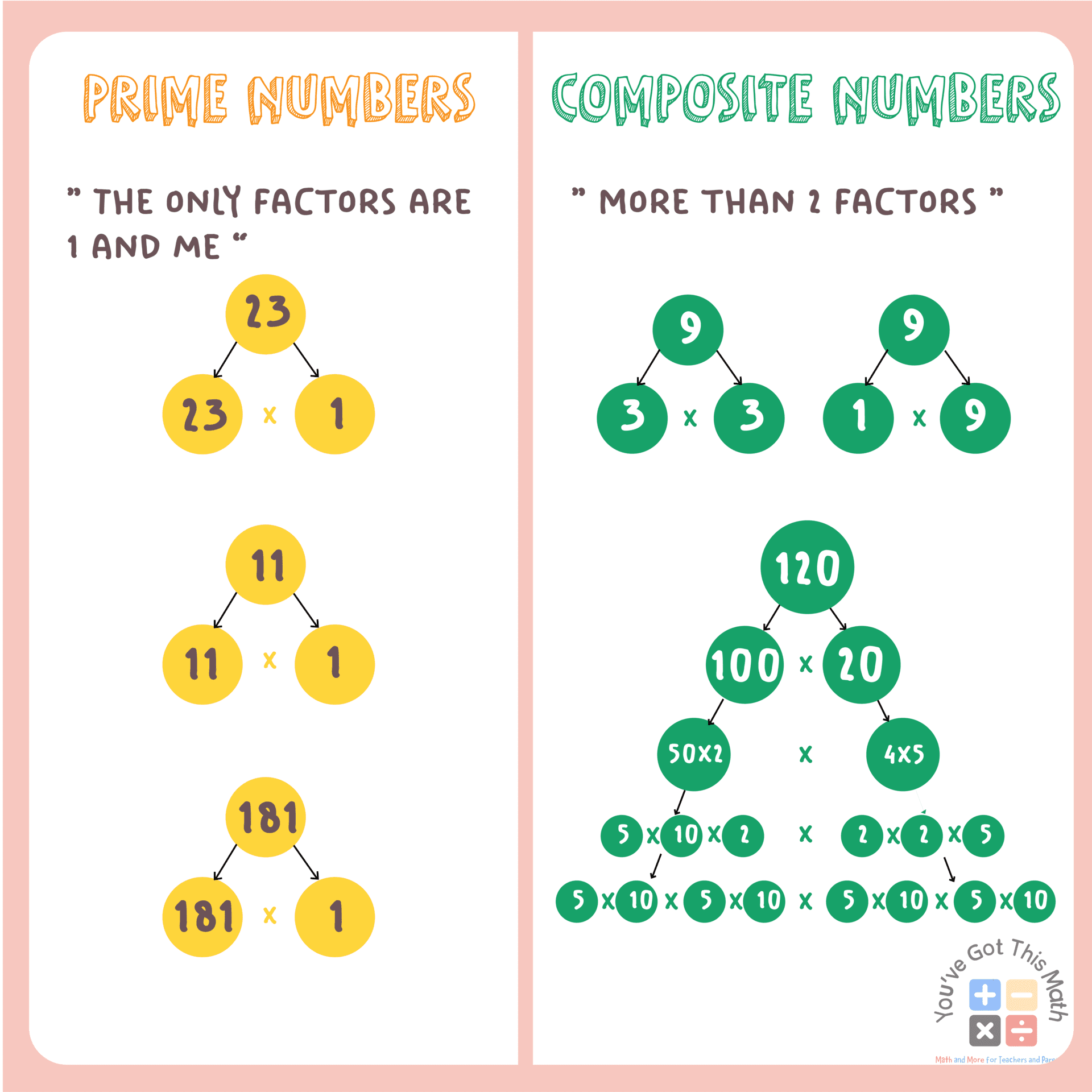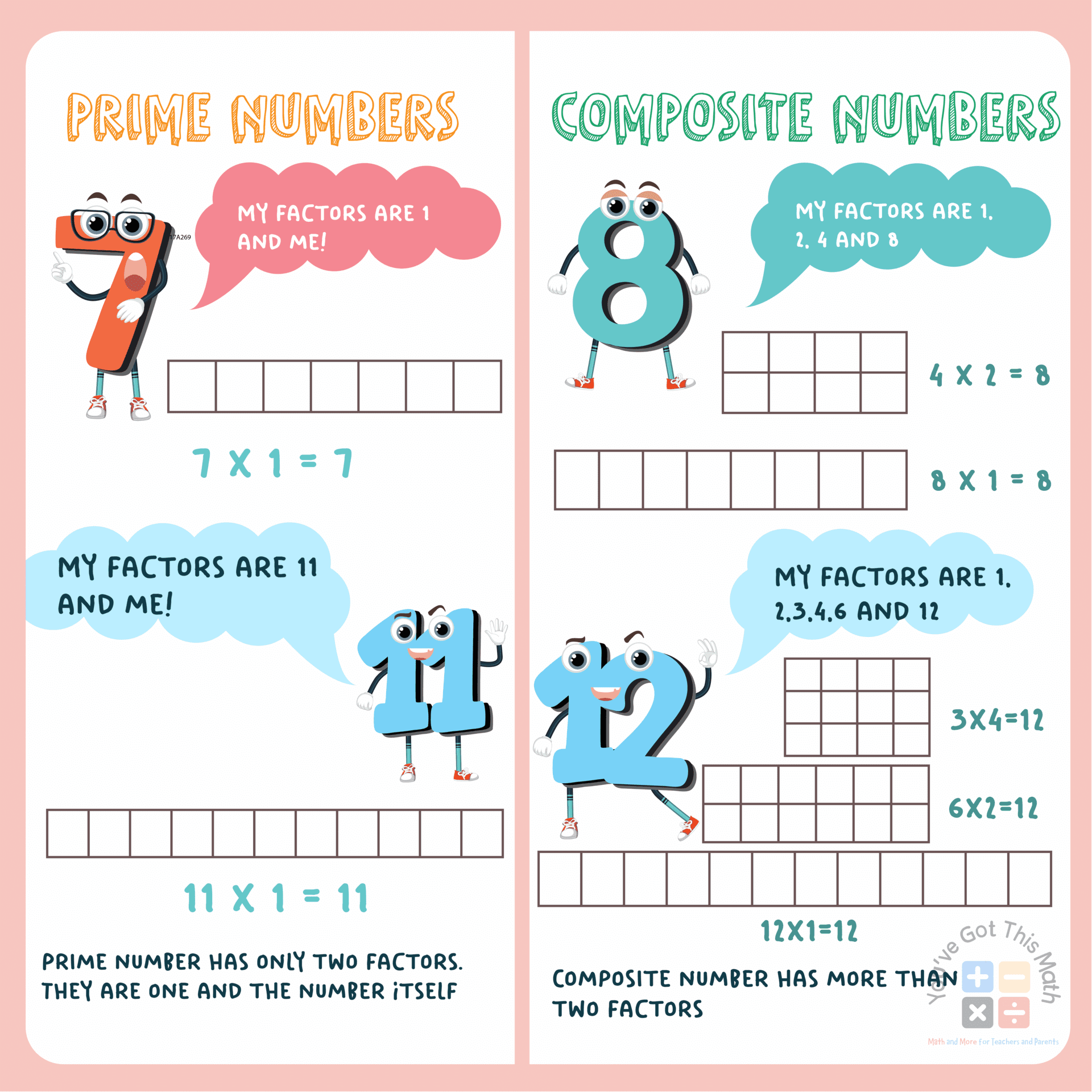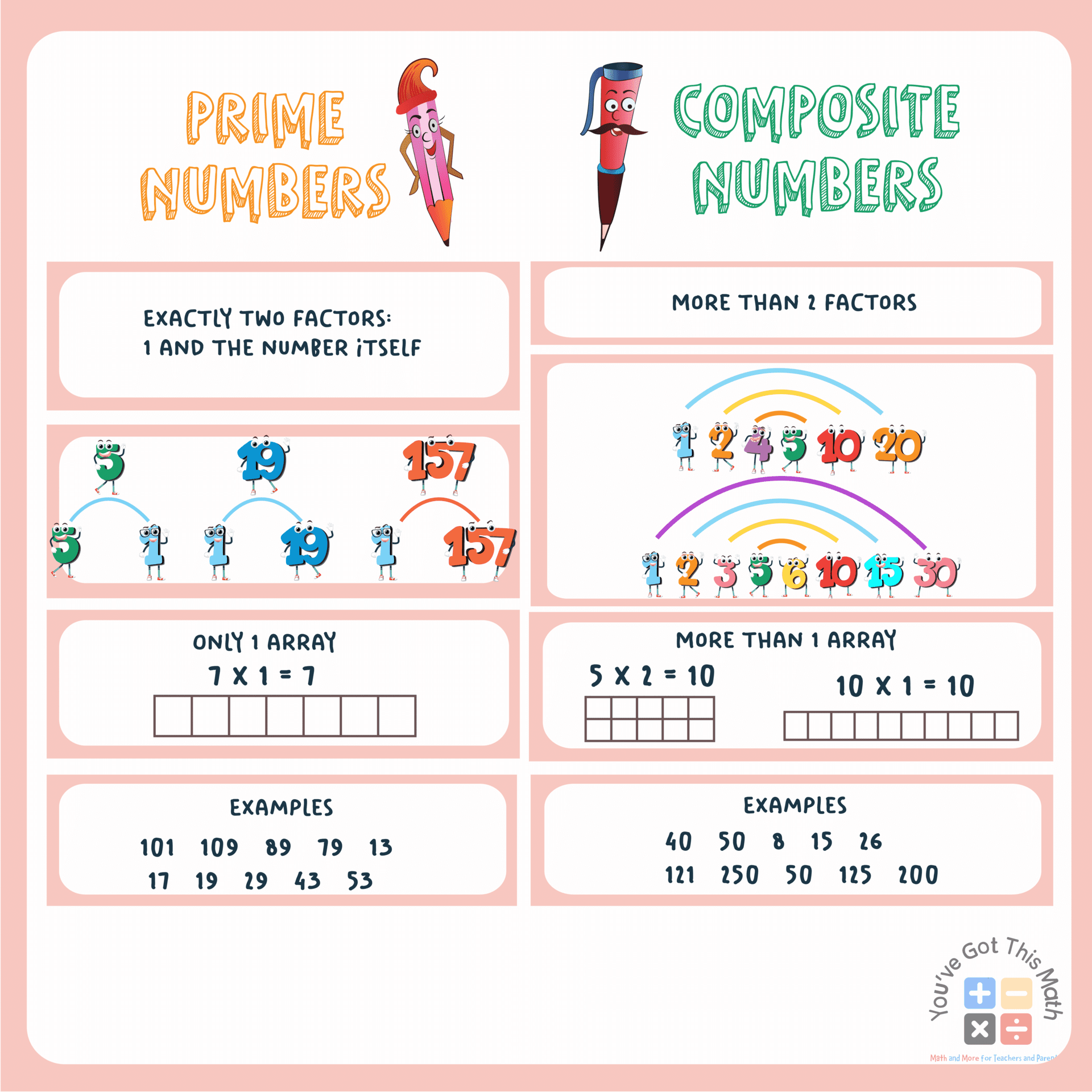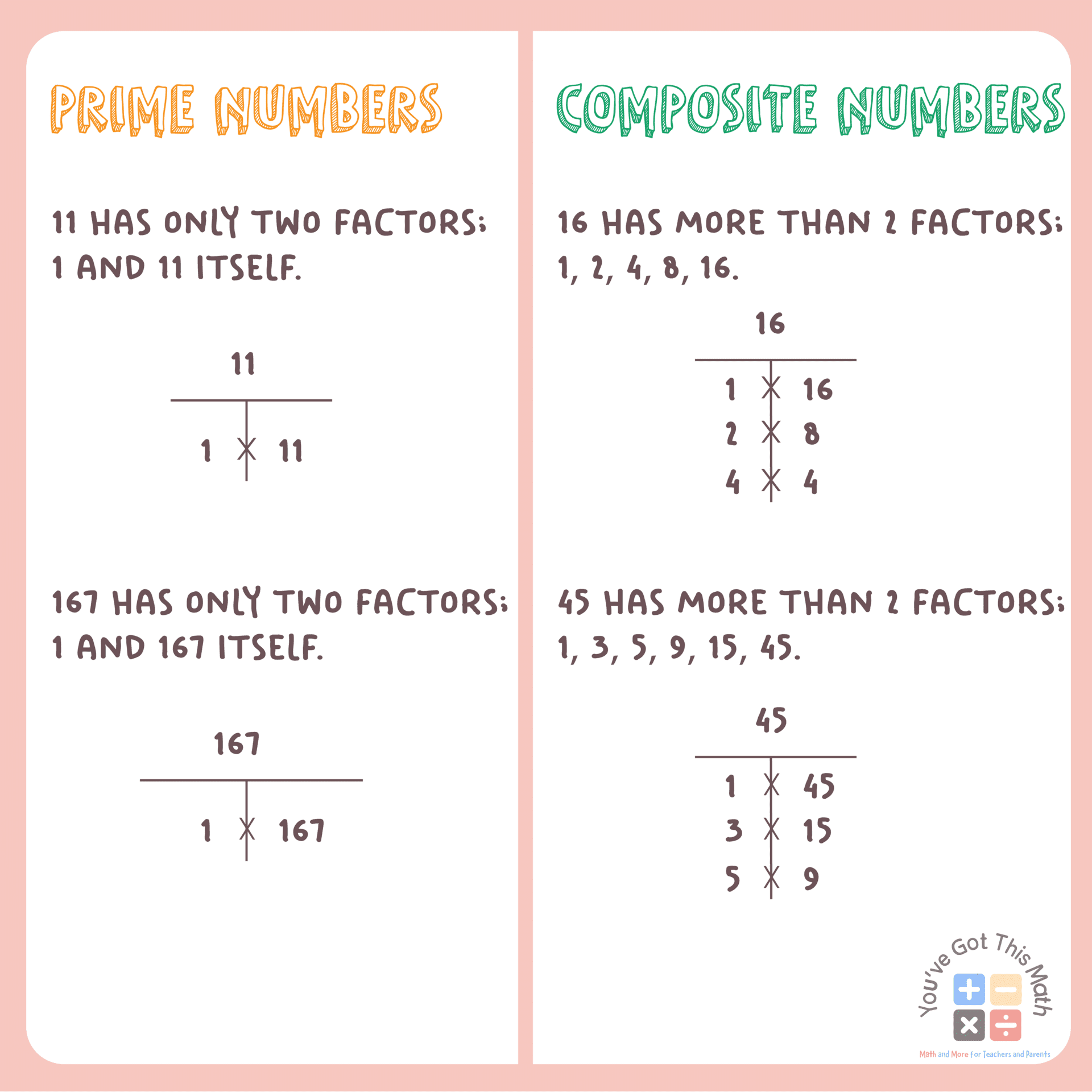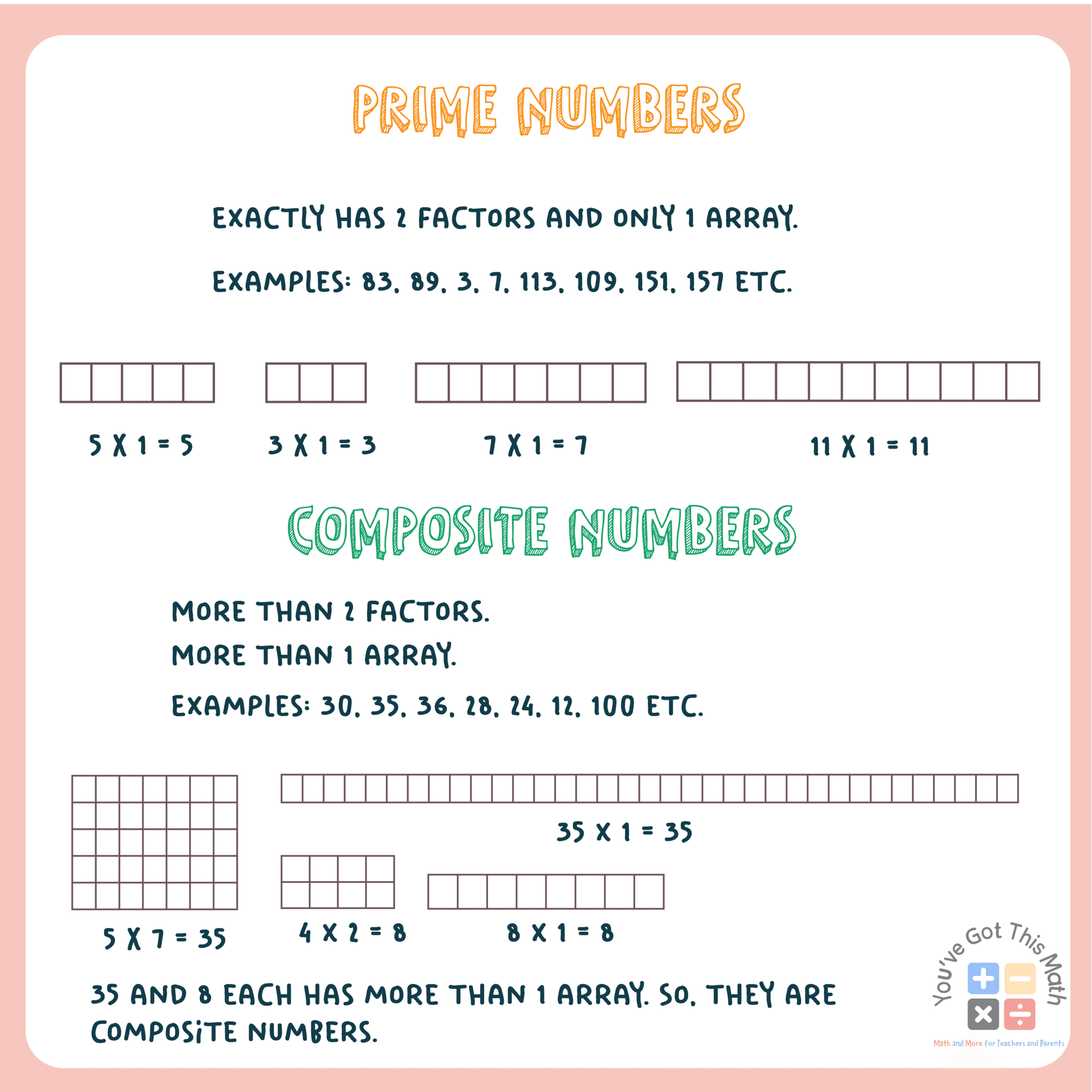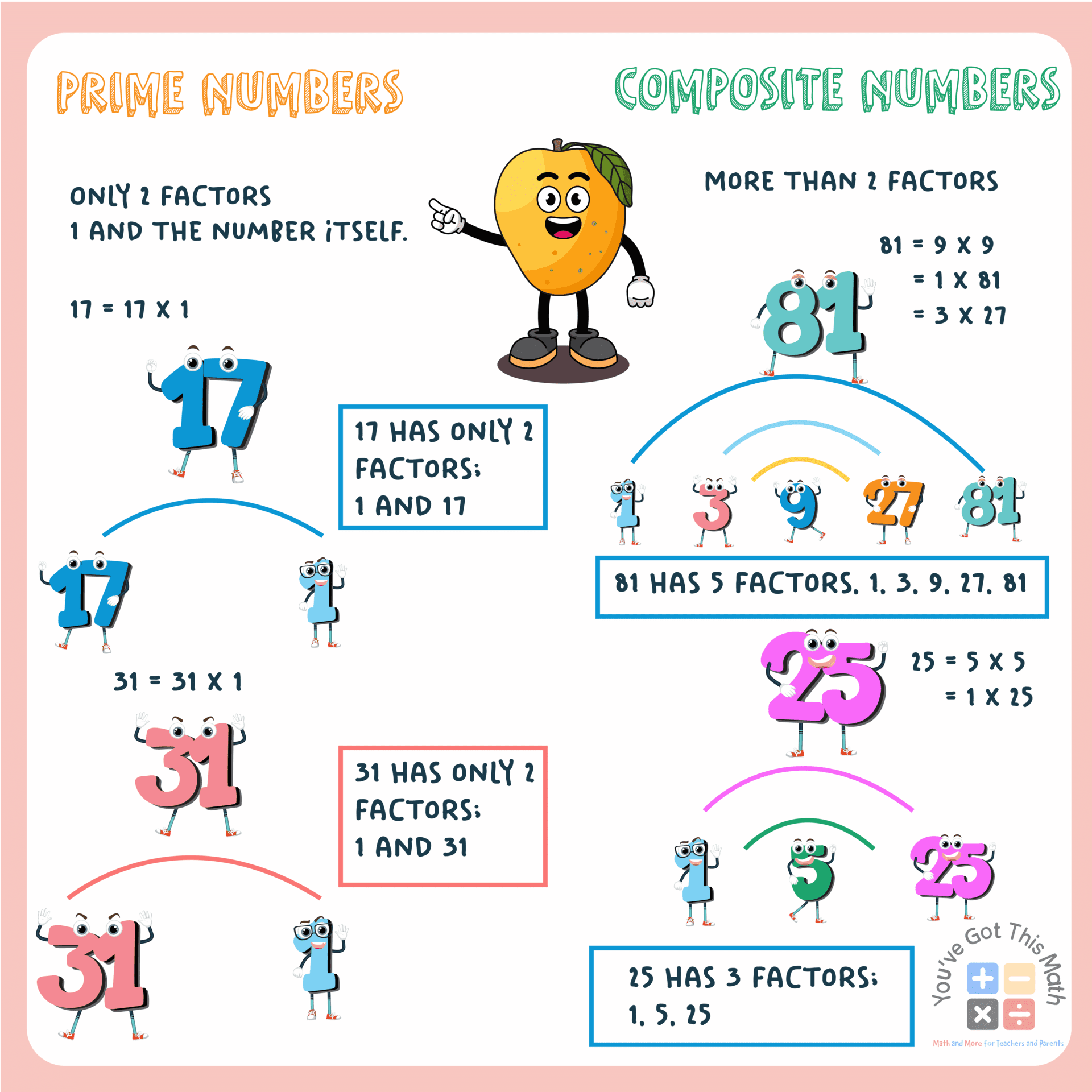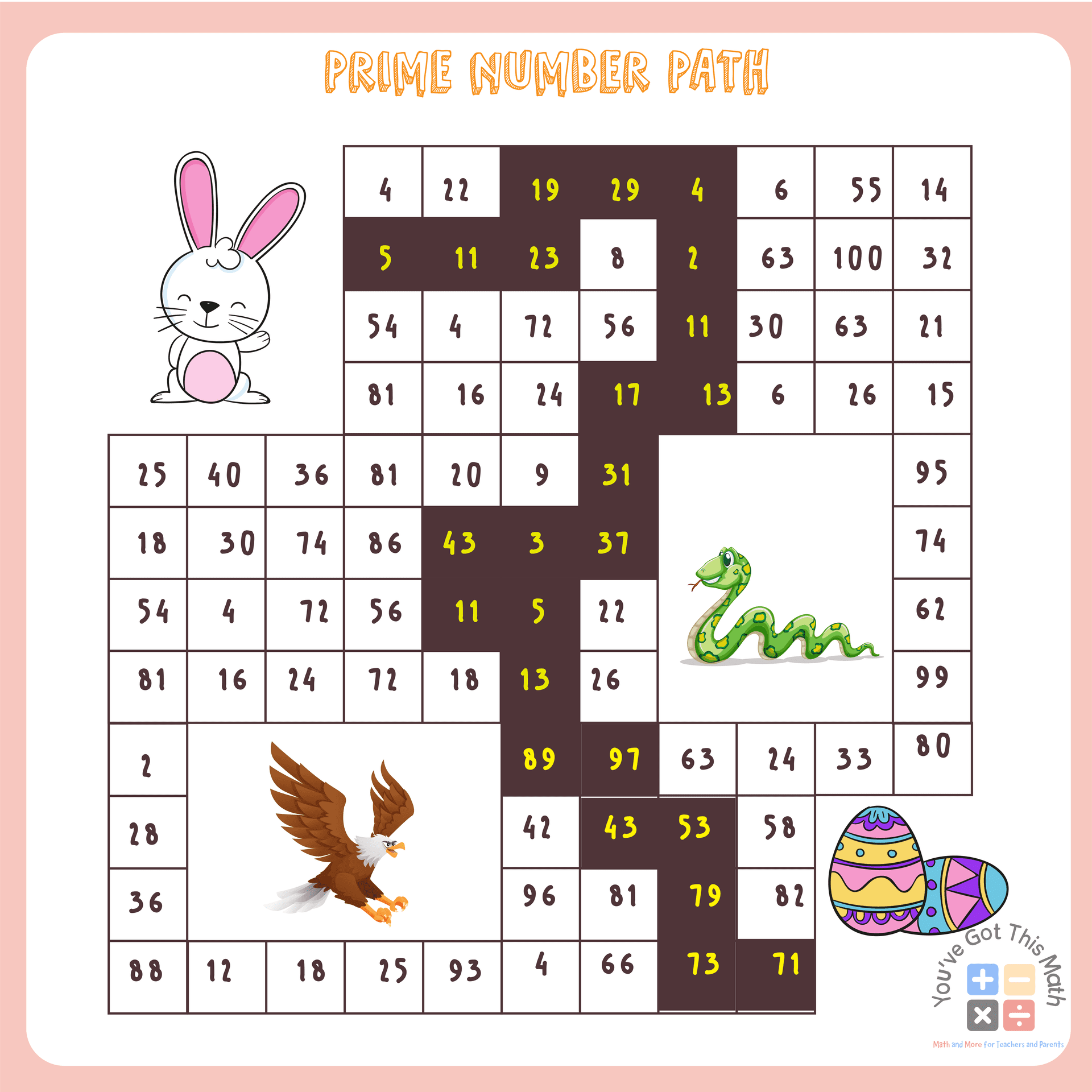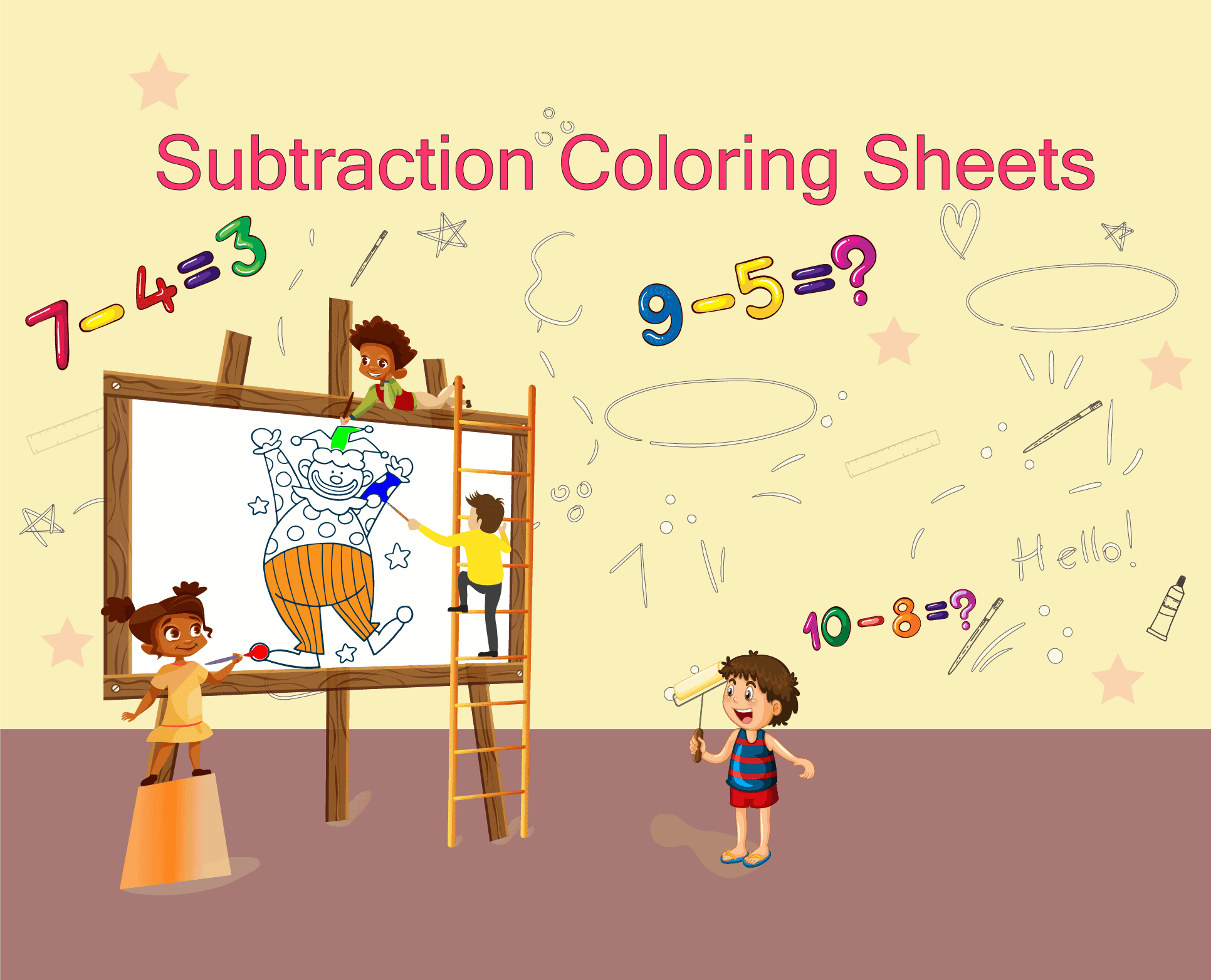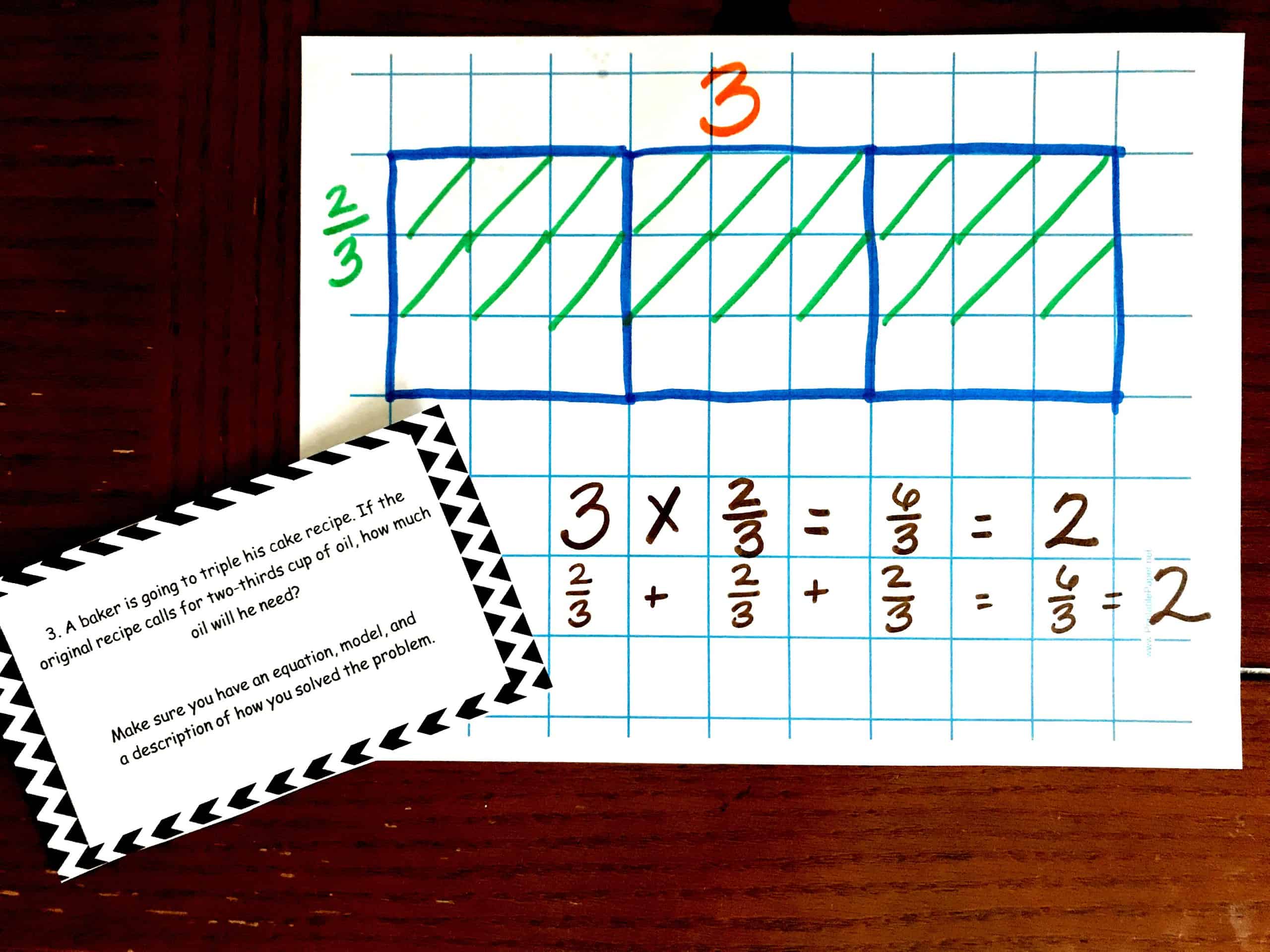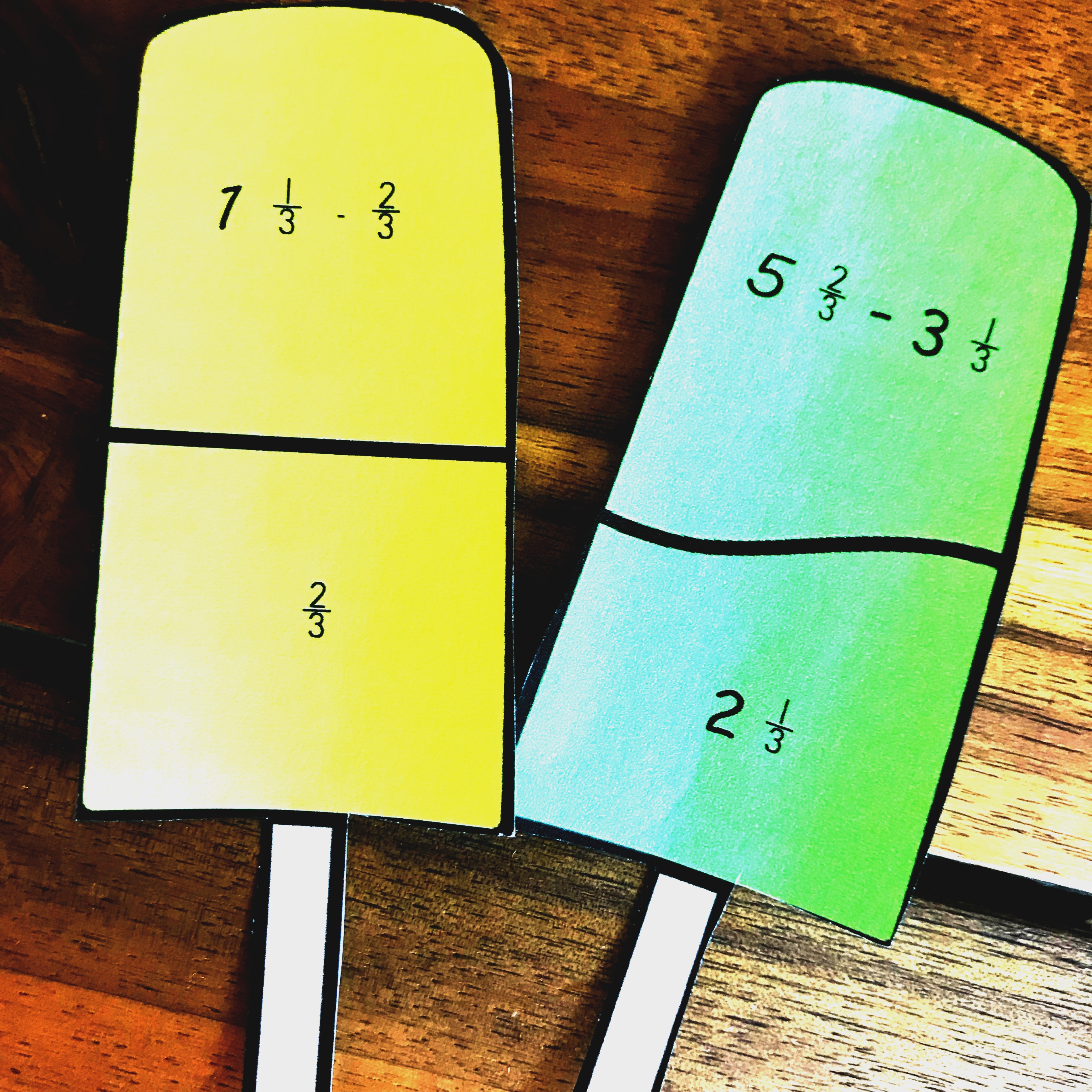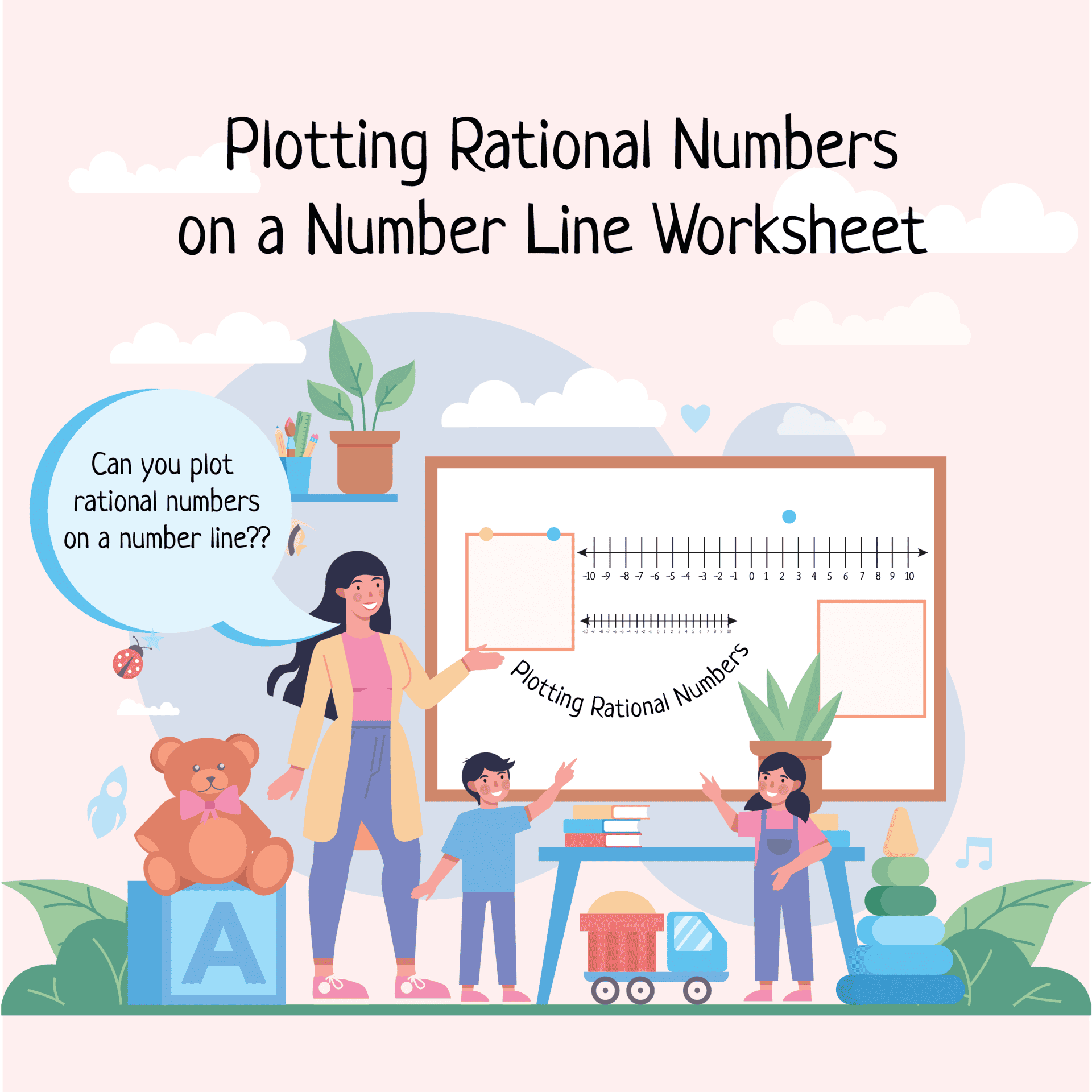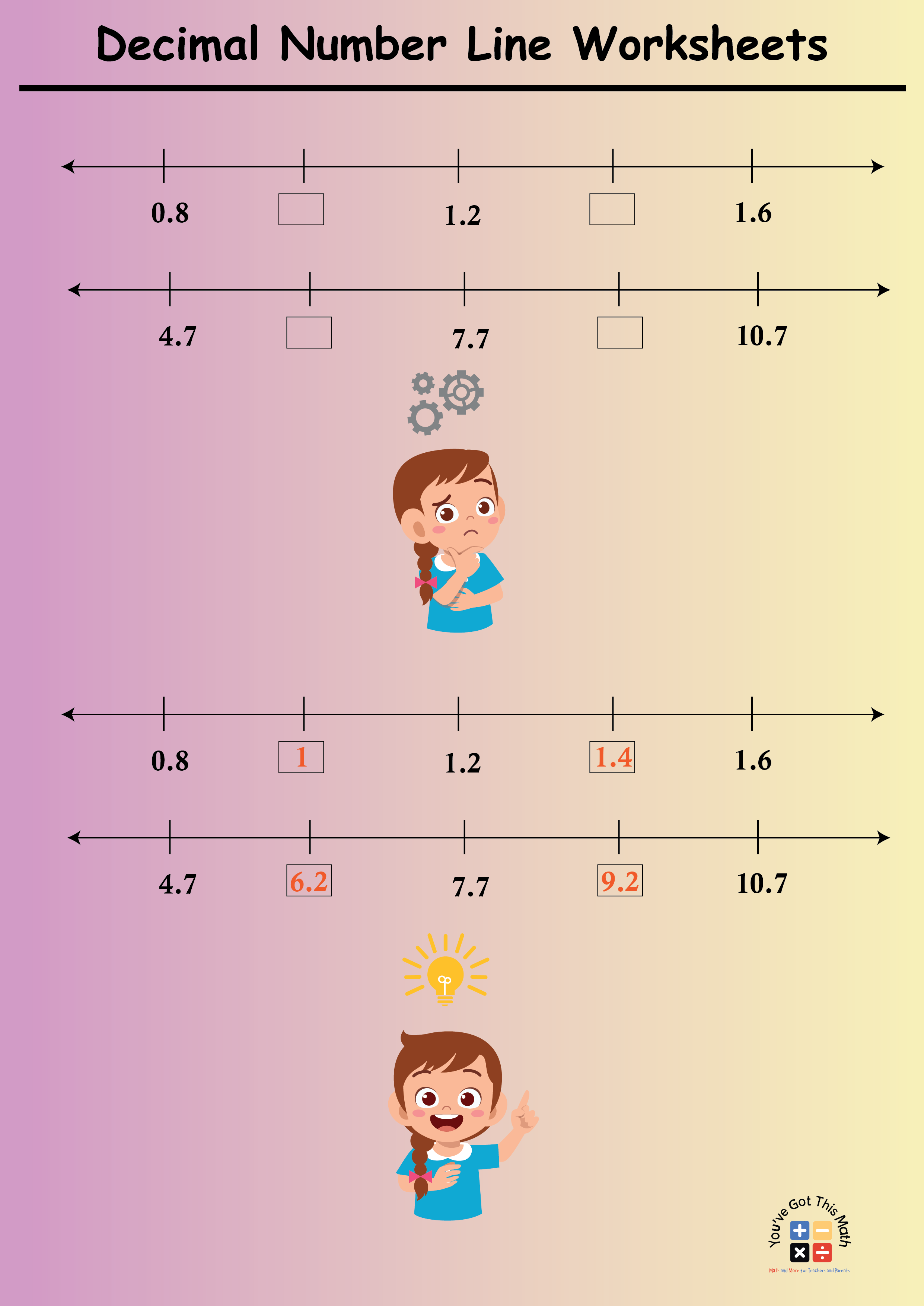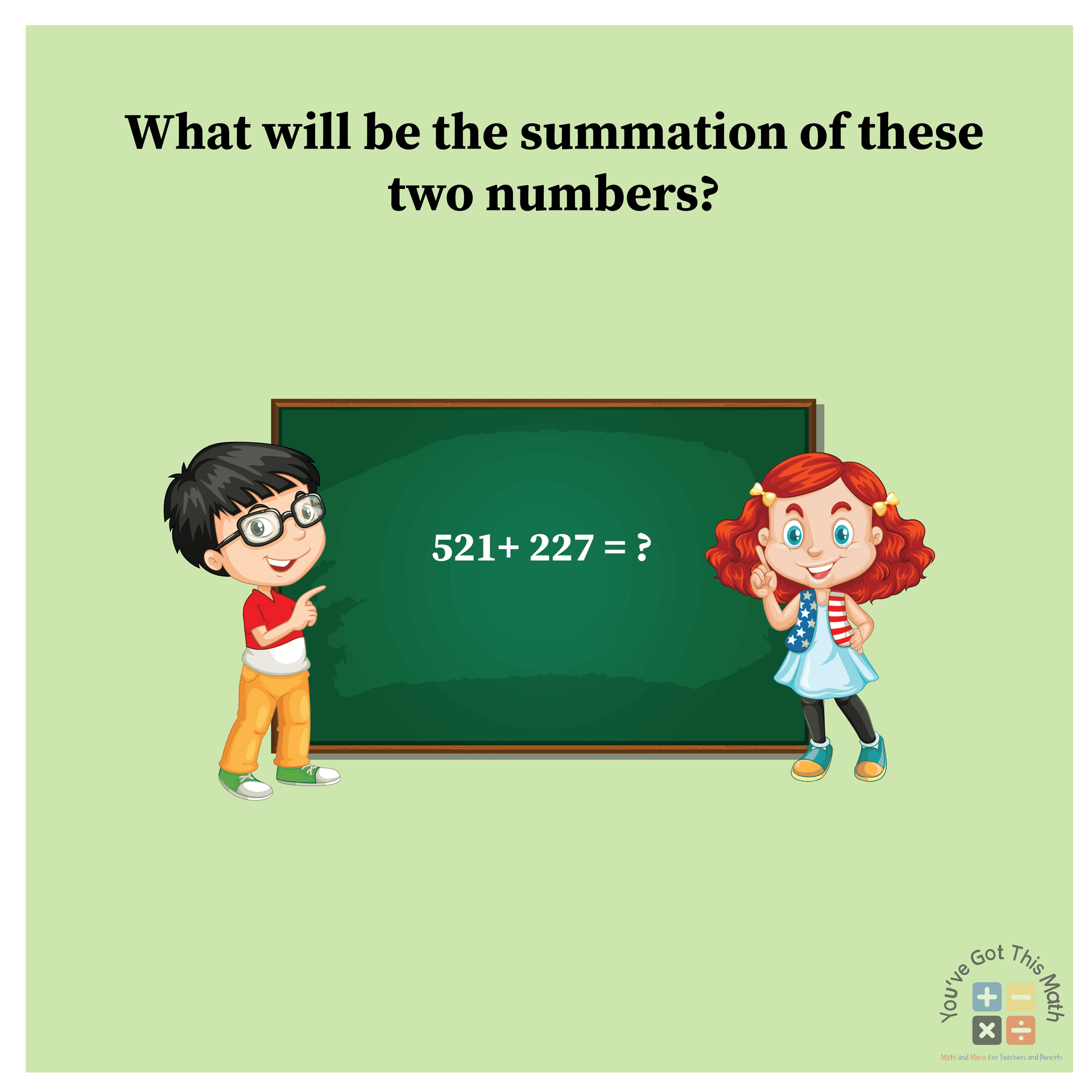8 Free Prime and Composite Numbers Anchor Chart
These prime and composite numbers anchor charts with examples will help to visualize and understand prime and composite numbers. 5th-grade students will learn basic finding prime and composite number methods and can improve their basic math skills with our free printable prime and composite numbers anchor chart with examples.
8 Exciting Examples of Prime and Composite Numbers Anchor Chart
Please download the following prime and composite numbers anchor chart examples and practice them.
Prime and Composite Number Definition
A number with exactly two factors, “1” and the number itself, is called a prime number. Such as 2, 3, 5, etc. If a number has more than two factors, it is called a composite number.
For example, 21 is a composite number with four factors, which are 1, 3, 21, and 7.
Rainbow Model Anchor Chart for Prime And Composite Numbers
I have a small math problem with a rainbow model anchor chart for prime and composite numbers. I gave the students two numbers and asked them to determine whether the numbers were composite or prime numbers.
For example, if I want to check the numbers 19 and 24 to see if they are prime or composite, I must first find out if they have any factors.
If it has only two factors, which are 1 and the number itself, then it is a prime number; otherwise, it is a composite number with more than two factors. Here, 19 has only two factors, which are 1 and 19 itself, so it is a prime number. However, 24 has eight factors that are divisible by 24: 1, 2, 3, 4, 6, 8, 12, and 24.
Chain Factor Anchor Chart for Prime and Composite Numbers
In this method, they will show the factors in a chain. For example, if they want to check 23 and 9 as prime or composite numbers.
They must first determine whether the numbers 9 and 23 have any factors. A number is a composite number if it has more than two factors and is a prime number otherwise.
Here, the numbers 1, 3, and 9 are all divisible by 9, whereas 23 has only two factors that are divisible by 23, and those are 1 and 23 itself. So, 9 is a composite number, whereas 23 is a prime number.
Area Model Anchor Chart for Prime and Composite Numbers
We can also determine prime and composite numbers through an area model anchor chart. All we need to do is draw the possible factors on the area model to determine the number types.
If a student wants to check if 7 is a prime or composite number, she needs to find the factors of 7, which are 1 and 7 itself. From the definition, we know that a prime number has only two factors, which are 1 and the number itself. 7 has only two factors, so it is a prime number.
On the other hand, 8 has four factors, which are 1, 2, 4, and 8. 8 has more than two factors, so it is a composite number.
Using Factors to Understand Prime and Composite Numbers
Factors are the easiest way to find a number, whether if it is a prime or composite number.
- First, check all the possible factors of a number.
- From the definition of a prime number, we know that if a number has only two factors, that is, 1 and the number itself, then it is a prime number.
- On the contrary, if a number has more than two factors, then it is a composite number.
- From the given example, we can say that 19 is a prime number as it has only two factors, those being 1 and 19 itself. But 15 is a composite number as it has four factors, which are 1, 3, 5, and 15.
Prime and Composite Numbers Anchor Chart with “T” Model
Through the T model, we can also identify prime and composite numbers.
All we need to do is find the possible factors to determine number types, and the model looks like a T. If a student wants to check if 11 is a prime or composite number, she needs to find the factors of 11, which are 1 and 11 itself.
From the definition, we know that a prime number has only two factors, which are 1 and the number itself. 11 has only two factors, so it is a prime number.
On the other hand, 16 has four factors, which are 1, 2, 4, and 8. 16 has more than two factors, so it is a composite number.
Array Model Anchor Chart for Prime and Composite Numbers
Through an array, we can identify prime and composite numbers.
- First, a student needs to identify the factors of a number to determine whether 3 is a prime or composite number.
- After that, she will make an array using that factor.
- According to the definition, a prime number is only one array. 3 is a prime number since it has only one array.
- In contrast, the number 6 has more than one array, which means it has more than two factors. So, 6 is a composite number.
Mango Man Prime and Composite Numbers Anchor Chart
This method is a mango man character-themed method for determining whether some numbers are prime or composite.
For example, if a student becomes a mango man and gets the number 17, he first finds the factors of the numbers. 17 has only two factors, and those are 1 and 17. That’s why 17 is a prime number. Again, another student gets number 20.
First, he needs to find the factors of 20, which have six factors: 1, 2, 4, 5, 10, and 20. So 20 is a composite number.
Number Game Anchor Chart for Prime and Composite Numbers
This method provides a game to determine prime numbers.
- First, I have made a worksheet of numbers from 1 to 100.
- Then, I ask my kids to color the prime numbers yellow so that the bunny can get Easter eggs.
- After coloring the prime numbers from the chart, they will also color the composite number blue.
Download Practice Worksheet PDF
Download the following combined PDF and enjoy your practice session.
We’ve discussed some prime and composite numbers anchor charts with examples using concepts like area models, factor, T models, array models, etc. Download our free worksheets, and after practicing these worksheets, students will surely improve their mathematical skills and get a better understanding of prime and composite numbers.

Hello!
Welcome to my profile. I have done my graduation from Ahsanullah University Of Science and Technology in Electrical and Electronic Engineering. Currently, I have started working as a Content Developer for “You’ve got this math” at SOFTEKO. As an Electric engineer, I always try to achieve innovative knowledge. I have an interest in research articles on different ideas. Also, I really like to solve innovative and mathematical problems. I really hope I’ll do better in the future as an Engineer.

